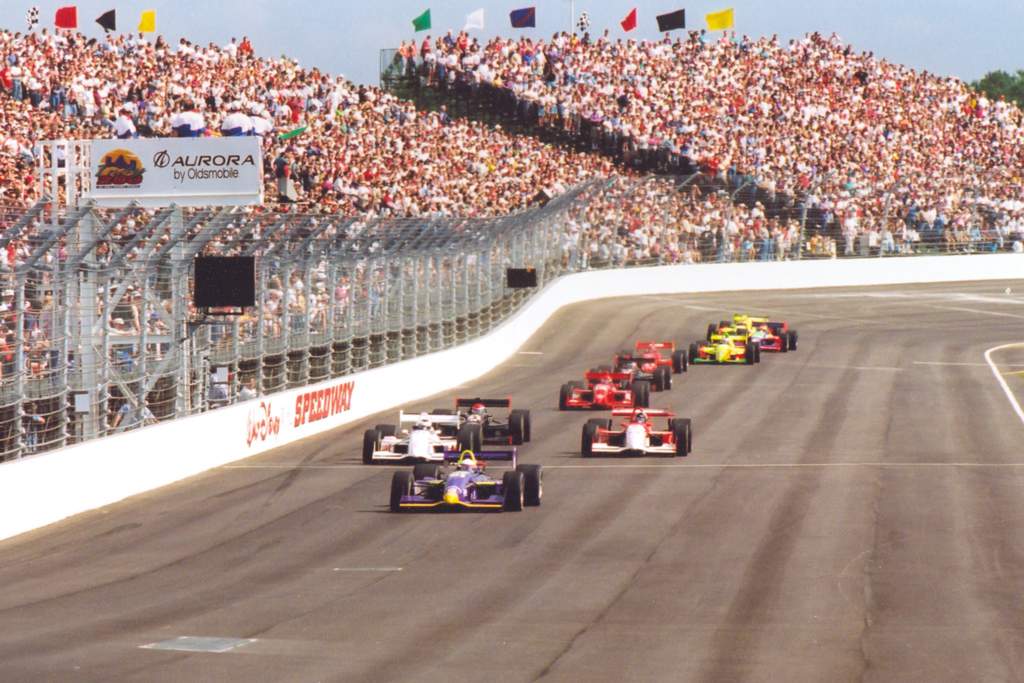This article originally ran in the lead-up to the delayed 2020 Indy 500
An Indianapolis 500 in August? You must be mad!
For an event that prides itself on its (sometimes unusual) traditions; running outside of May for the first time is unthinkable, but there’s little choice in the matter – like many things in the cursed year of 2020.
With such a rich history to peruse, we decided to turn the frown of a delayed 500 without fans upside down and sift through the record books.
We’ve collated some of the weirdest, wackiest, unusual, breathtaking, and spectacular events in the history of the Brickyard for your enjoyment.
Caution: You may laugh, cry, shout and/or gasp while reading.
1996 – Fast, but with something missing
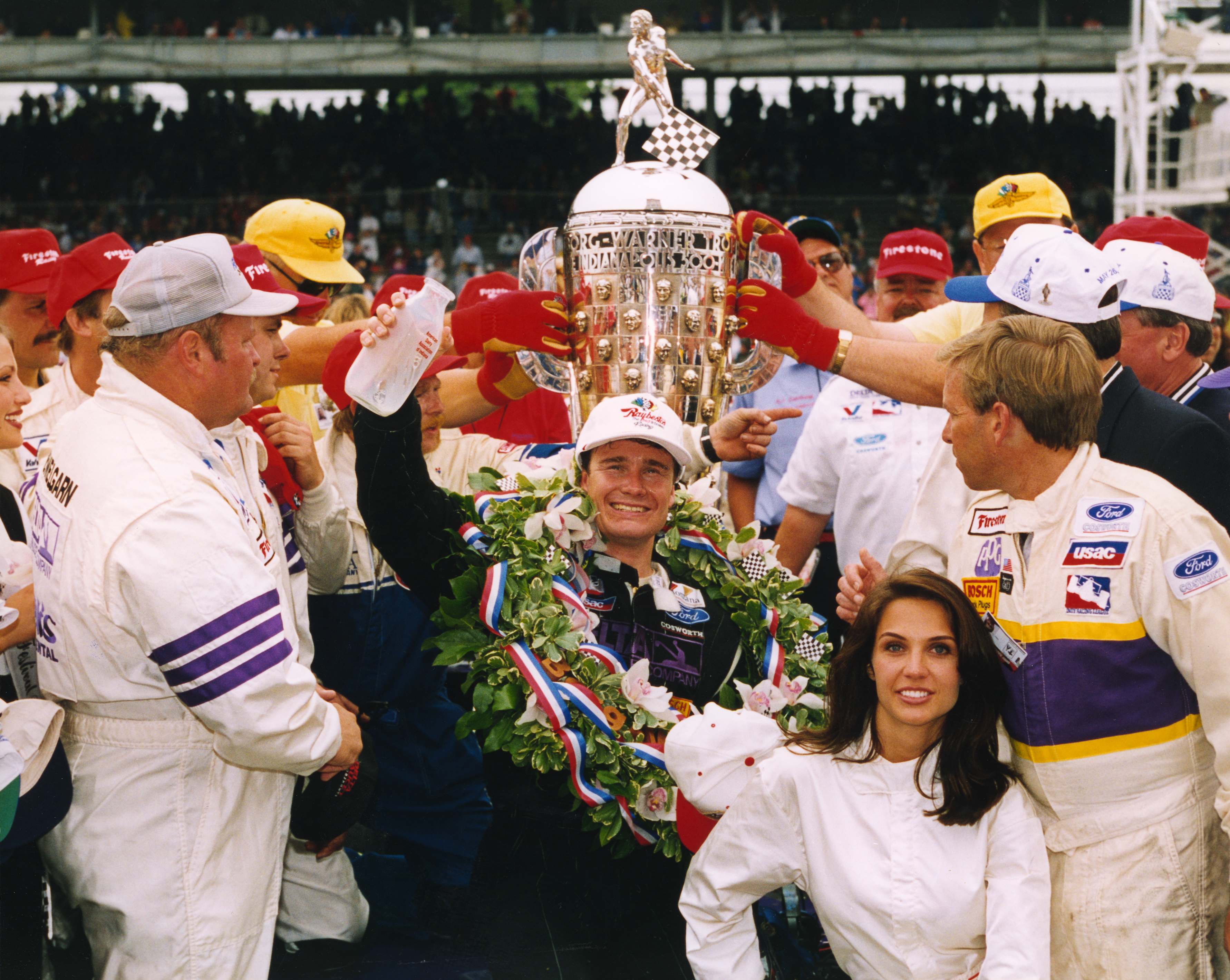
In year one of the CART/IRL split, a ramshackle Indy field filled out with unknowns and drivers past their best put on a race littered with mechanical failures and scruffy incidents. The idea of CART losing this war looked ludicrous if judged on the on-track product.
The split was allegedly ideological – Indy owner Tony George fighting for US single-seater racing’s oval-based roots, American drivers and short oval ladder against CART’s international field and road courses. In reality, it was all about power and control – with faults on both sides.
With the IRL committed to its ’25 and 8′ rule – in which 25 of the 33 grid spots for the 500 were reserved for entrants contesting its full season – and CART committed to a clashing rival race called the US500 at Michigan, compromise was off the agenda.
The driving standards were not universally poor at Indy that year. Future legend Tony Stewart was dominating before a pop-off valve broke, and deserved to have an Indy win on his record.
Given the agony Buddy Lazier was in from back injuries sustained in a vicious Phoenix crash under three months earlier, his victory couldn’t be begrudged. It’s also – thanks to a new track surface and the final year of the powerful CART machinery being used – the year when all track speed records were set.
But the tragedy of that May mustn’t be forgotten either – pole-winner Scott Brayton lost his life in a subsequent practice crash.
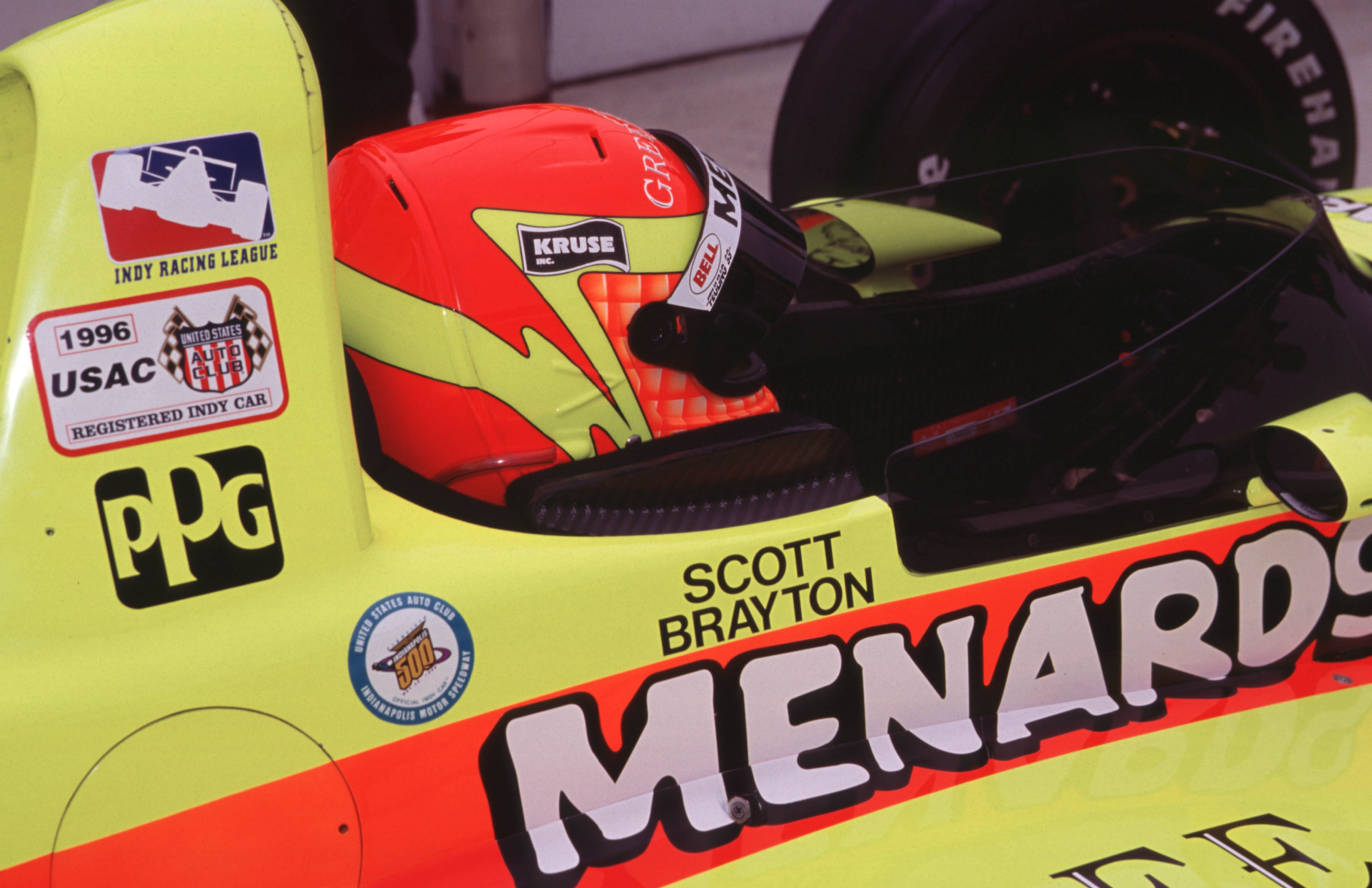
Lazier turned out to be the only truly anomalous Indy winner of the era before the big teams returned to the 500 and CART waned. A second win for Arie Luyendyk in 1997 and then subsequent triumphs for ex-Formula 1 racer Eddie Cheever and future CART frontrunner Kenny Brack were all Indy wins you could imagine happening in any era. Maybe even Lazier’s too, had he got better opportunities in his career.
And yes, while Indy 1996 was peppered with messy incidents, let’s not forget that most of the far higher quality US500 field was caught up in a ludicrous warm-up lap pile-up. CART never tried an Indy-style three-wide start or a direct clash with the 500 again.
The fact it was CART that ultimately collapsed on paper makes the IRL the winner of the war of 1996, as unlikely as that seemed at the time.
But while it was indeed a victory in a business sense, the modern IndyCar Series that the IRL grew into is effectively the CART model of reduced ovals, large teams, and international drivers. And given the fact that the level of team control in CART was one of George’s biggest bugbears, it does now feel ironic that leading team owner Roger Penske now owns Indy and the championship too.
1924 & 1941 – Winners that didn’t lead laps
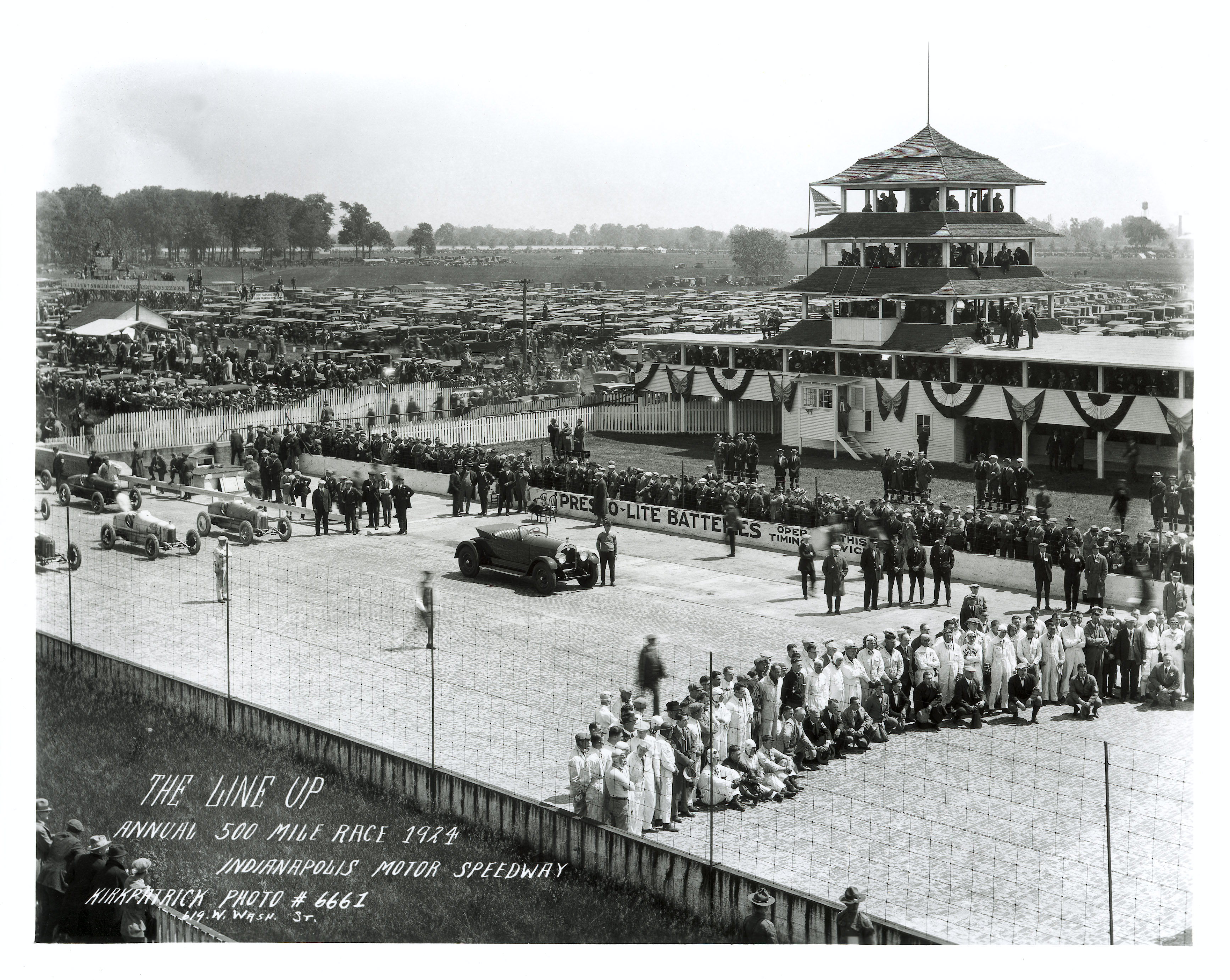
There’s nothing absolutely mighty about 1924 and 1941 – yes, sorry to be a cop-out but we’ve combined these into one entry.
However, both feature winners that never led a lap! Confused? You should be.
In 1924, Duesenbergs (or Dusies) tried seven times to win the 500 and was successful on the eighth, while in 1941, the Noc-Out Hose Clamp Special won at its third attempt. Both cars had drivers replaced during the race.
LL Corum was fourth and well over two minutes behind the leader when he pitted the Dusie for a planned stop not long after halfway in 1924. Joe Boyer had driven another Dusie, but suffered an issue with the supercharger that three of the team’s cars featured that year, putting him out of the race.
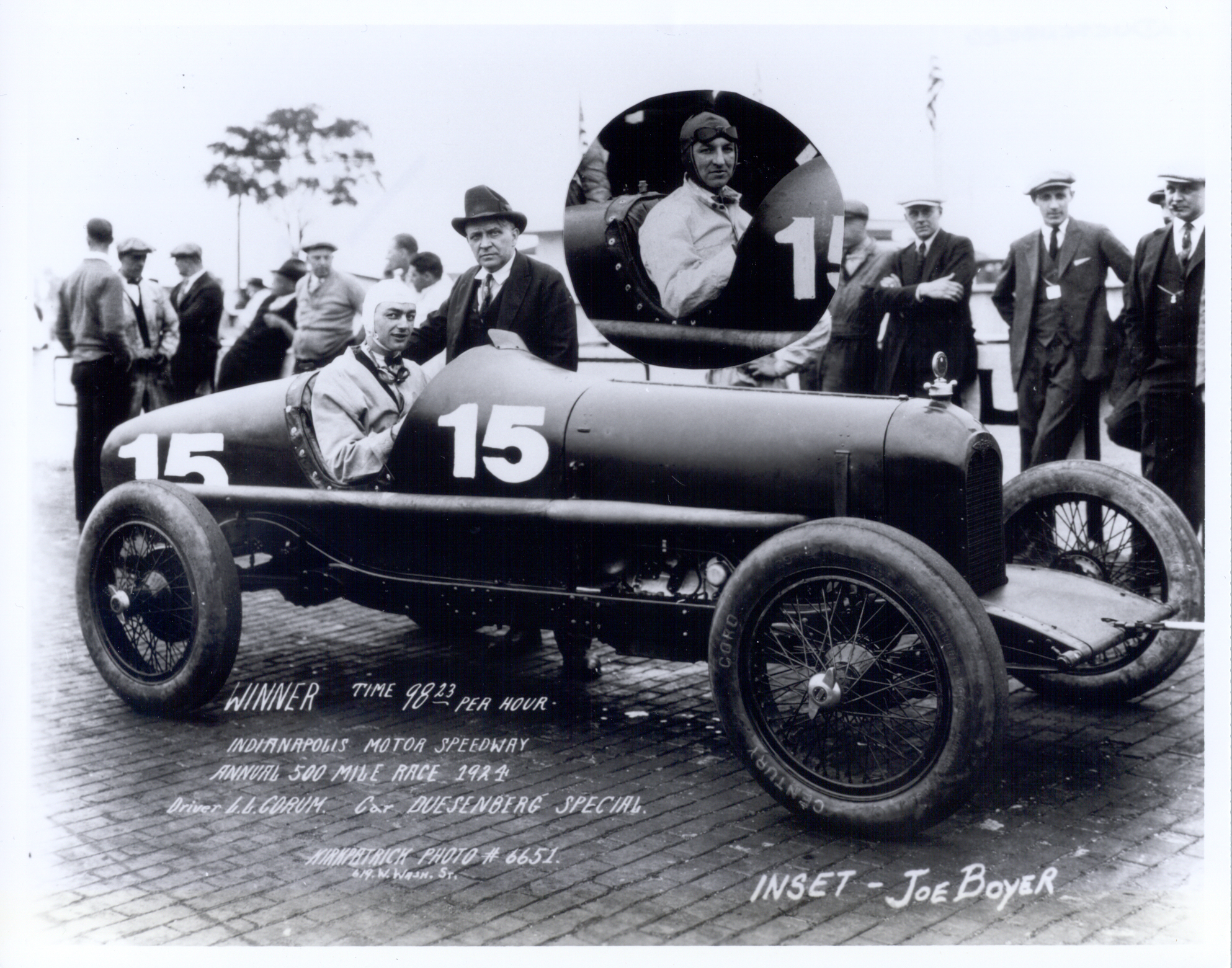
He was promptly installed in Corum’s entry and scythed through the pack to win by just under a minute and a half – making Corum an Indy 500 winner without featuring at the front himself.
In 1941, Floyd Davis started the #16 Wetteroth Offenhauser but was running 12th when called in to be replaced by team-mate Mauri Rose, who had retired earlier with ignition issues.
Rose – just like Boyer – pummelled the opposition in what would be the first of his three victories, two of which would be a rare instance of consecutive wins, in 1947-48.
Neither Corum nor Davis led a lap of the Indy 500 in those winning years, but their faces are enshrined on the Borg-Warner Trophy nonetheless. They were inserted as insets in the winners’ pictures which can be seen above and below.
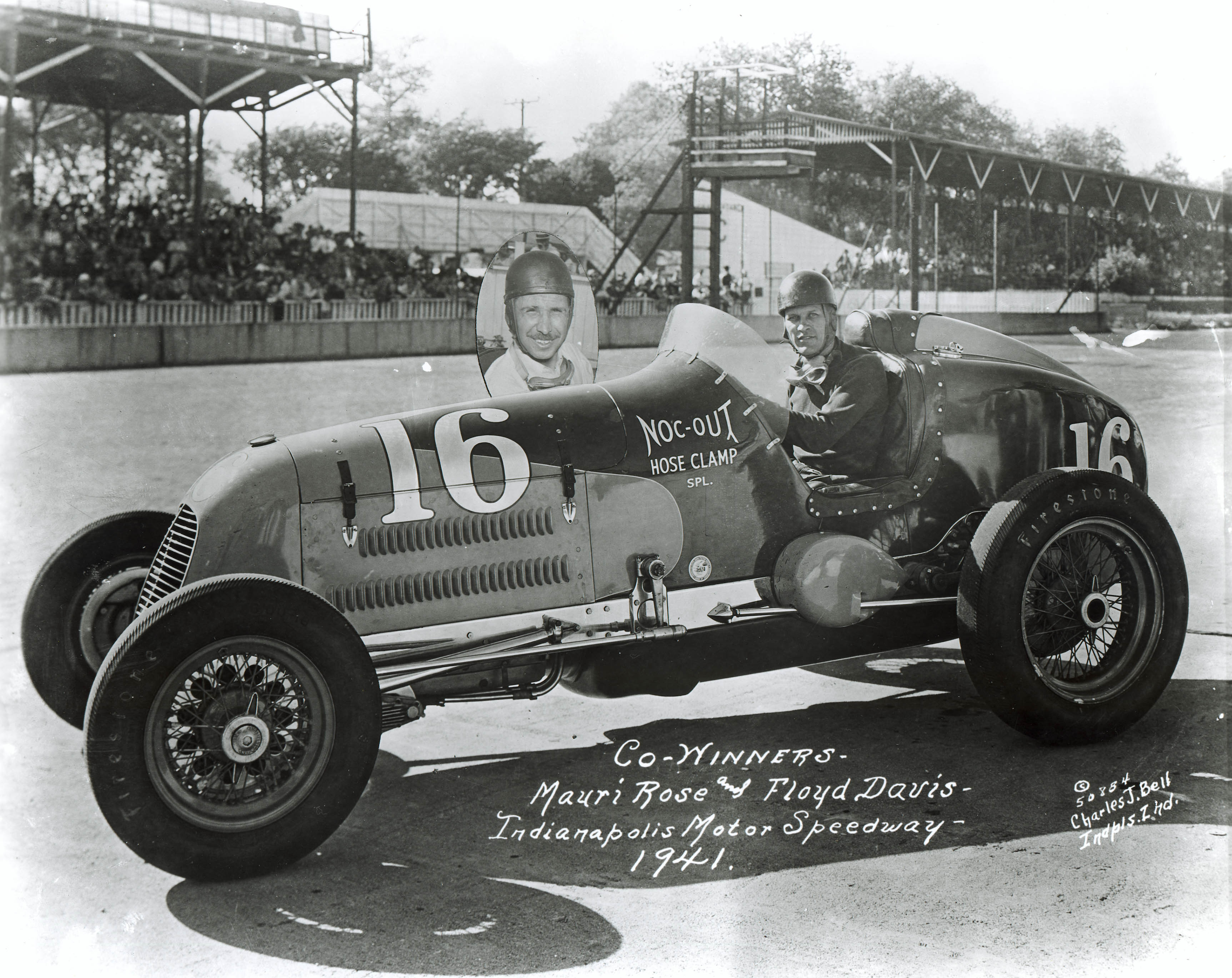
1976 – The shortest 500 ever
With turboboost turned down for 1976, it was already the slowest 500 for a little while.
Amid a proliferation of four-cylinder Offenhauser cars, including those led by works outfits and six customer McLaren cars, three-time winner AJ Foyt’s bid to become the first four-time winner came with a Ford V8 set-up, variations of which would win for the next 10 years.
It wasn’t the engine that hindered Foyt in the race though – it was the broken sway-bar. He was still a factor in the early running but McLaren’s own Johnny Rutherford was the main star amid plenty of lead changes. Rutherford established control on lap 80 until the all-important 102nd lap.
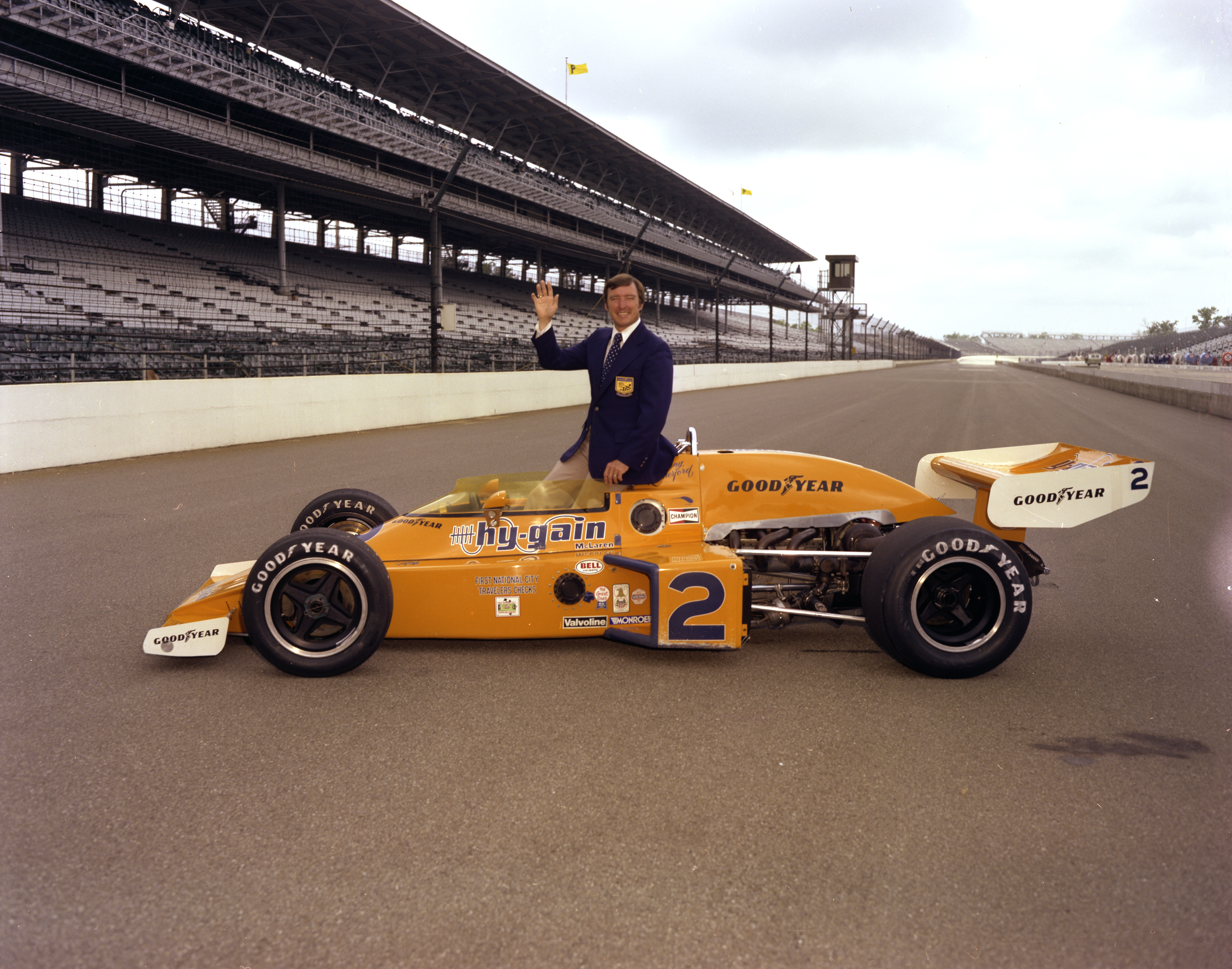
Rain fell and – having just completed the 101st lap, the minimum – the race could be called.
Foyt may initially have been happy to see the rain as it allowed him to repair his sway bar, and after two hours of waiting for the track to dry engines were fired only for the heavens to open again and the race to be abandoned.
It made Rutherford the first man to walk rather than drive into victory lane at the Indy 500!
It was his second of three wins, and also McLaren’s second of three wins. It would also be the last of 27 Offenhauser wins at the Indy 500, which is still more than double the next best of the tied Honda and Miller brands.
1984 – The biggest ever entry
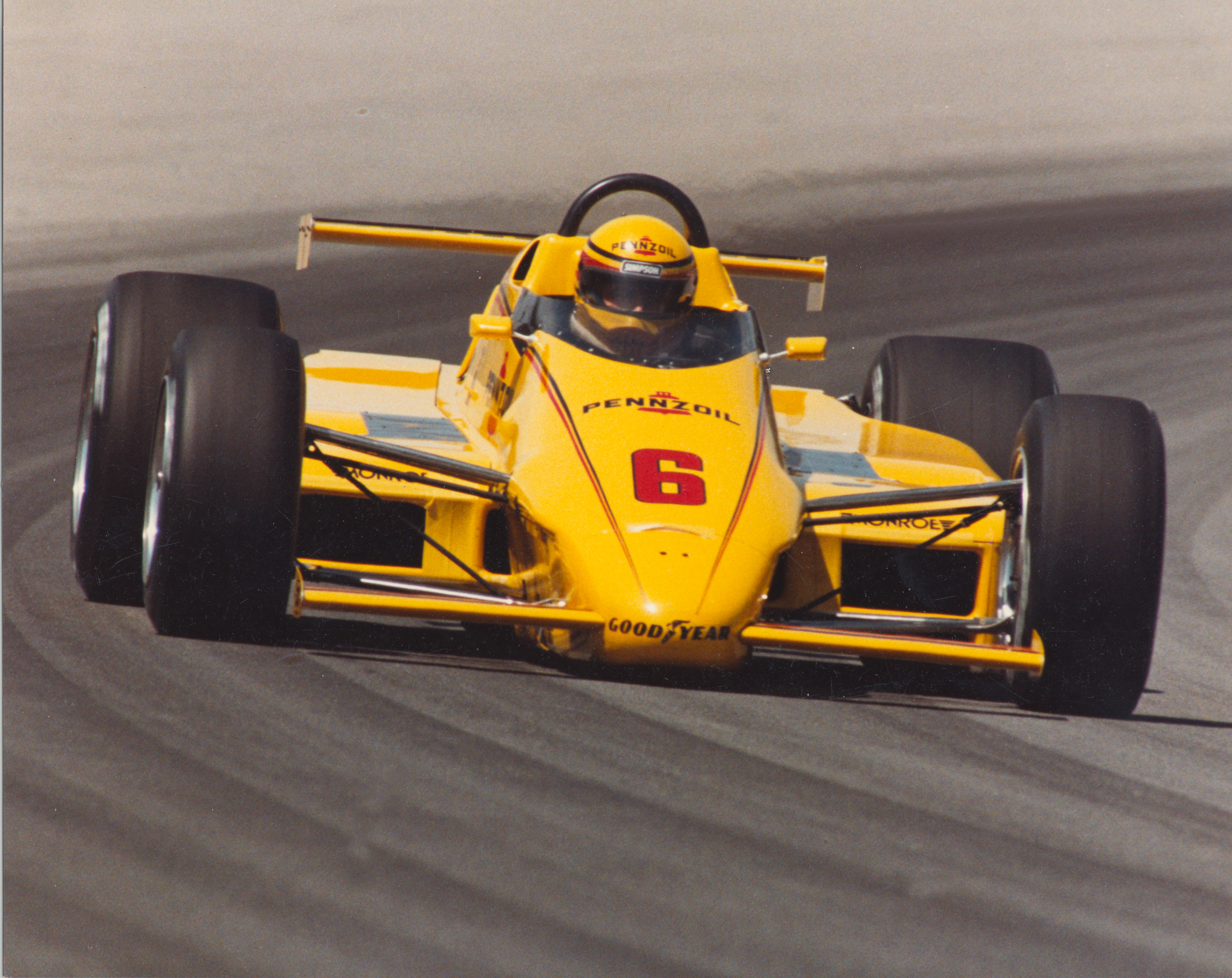
Don’t worry, we haven’t picked this one as the year that Ligier made its Indianapolis 500 debut!
All in all, a record 117 cars were entered for the event – including back-up cars – a quite staggering number propped up with various examples of the then-dominant March chassis, although in 1984 Newman/Haas brought a Lola for Mario Andretti to challenge the status quo.
Andretti had to bow out with bodywork damage and Tom Sneva – the 1983 winner – had set a new four-lap speed record of 210.029mph in qualifying with a memorable run, only for a CV joint to fail while contending for victory this time.
All that left Rick Mears to bring home his second Indy 500, but it will be remembered for being the most populous 500 to date.
Though that 117 figure was not entirely representative and was whittled down before cars hit the track, there were still 24 cars that failed to qualify from an enormous entry the likes of which will probably never be seen again.
1995 – No Penske and a win from two laps down
One year after dominating the race with a very special Mercedes engine, Penske failed to qualify. The first car to cross the yard of bricks for the 200th time wasn’t officially in the race anymore. And the actual race winner came back from receiving a two-lap penalty.
The last unified Indy 500 before the damaging-is-an-understatement CART/IRL split made sure it left its mark on US racing history.
Penske was uncompetitive from the moment it arrived at the Speedway, leaving previous 500 winners Al Unser Jr and Emerson Fittipaldi to suffer the ignominy of trying to get through Bump Day in borrowed cars – and failing.
Several drivers could have won the wide-open race, but it boiled down to Jacques Villeneuve vs Scott Pruett vs Scott Goodyear. After recovering from his two-lap penalty Villeneuve didn’t appear to have anything for the two Firestone-shod cars, then things fell his way.
Pruett crashed, and on the subsequent restart, Goodyear went too early. He caught the pace car in Turn 4 but kept his foot down and blasted past it. Villeneuve – whose earlier penalty was for mistakenly passing the pace car under caution when he didn’t realise he was the leader – and the chasing pack backed off, and Goodyear was inevitably black-flagged.
Goodyear ignored the flag, and stayed out even once race control stopped counting his laps. He looked up to see if the chequered flag was shown to him at the end of the final lap, and it wasn’t.
Villeneuve won the race, although Goodyear’s Tasman team claimed it would challenge the result, with the mistaken belief that Villeneuve’s penalty must have been overturned, so Goodyear’s could be as well.
It was a crazy month.
1916 – The baccarat Indy 500
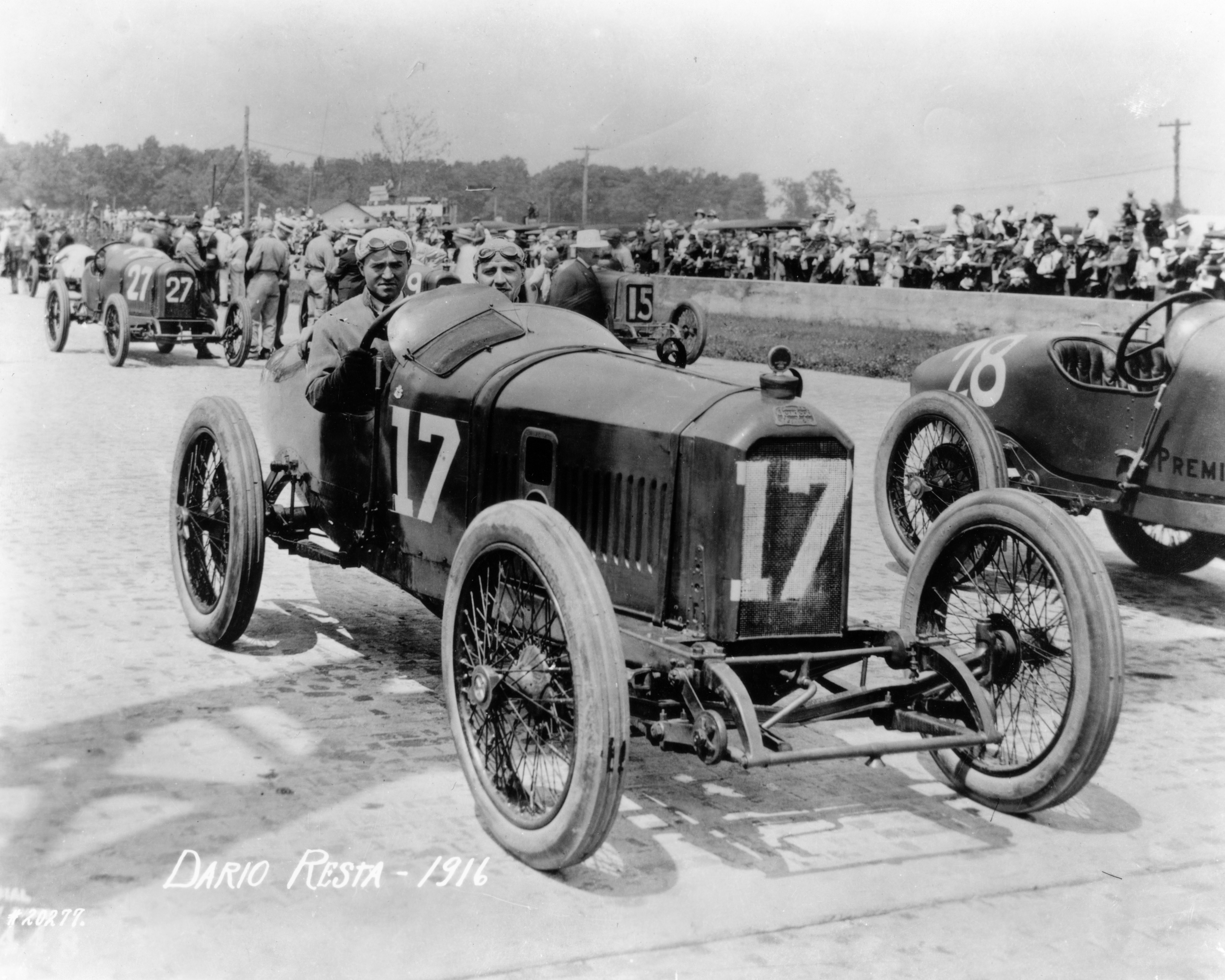
This Indianapolis 500 was just weird from start to finish!
First off, it was the first not actually scheduled for 500 miles, despite being included in the annals of Indy 500 history. Two stories for the reasons behind shortening the distance to 300 miles exist, one blaming the onset of World War 1 and the second stating that the speedway owners wanted to ensure a more intense and exciting race for spectators. The truth is probably a mixture of both.
Owing to the war, foreign entries were sparse and many car builders were not producing new machinery. The speedway owners knew entries may be hard to come by and backed seven additional cars to help them make the field and boost the entry due to the circumstances. However, despite the event being famous for ’11 rows of three’ (a 33-car grid), the fewest-ever number of entries started the race with just 21 – another factor forcing it onto this list.

Reigning winner Ralph DePalma reportedly wanted $5000 appearance money to return and was rebuffed, and in-turn Brit Dario Resta bettered his 1915 second-place finish by winning. He wasn’t the only winner as the early Indy tradition of a ride-in mechanic meant Robert Dahnke took victory alongside him. The ride-in mechanics would check for approaching cars almost like a spotter, as well as carrying out general servicing duties they could do from in the car, with pitstops infrequent.
Resta took the lead from future World War 1 fighter pilot hero Eddie Rickenbacker, who would buy the speedway in 1927 and make many improvements before it became almost derelict in World War 2 and then passed to the Hulman family.
Not only did World War 1 threaten to derail the event, so too did an argument between the speedway officials and local hotel owners who were pumping up prices in anticipation of the big 500 crowds. They reached an agreement before the track could carry out its threat of moving the race to Ohio.
Resta’s win was a rare one of two wins for BF Goodrich tyres. Michelin and Palmer Cord both won in that decade, but aside from those three manufacturers, Firestone (70) and Goodyear (29) have split the wins.
1965 – The ‘funny car’ victory
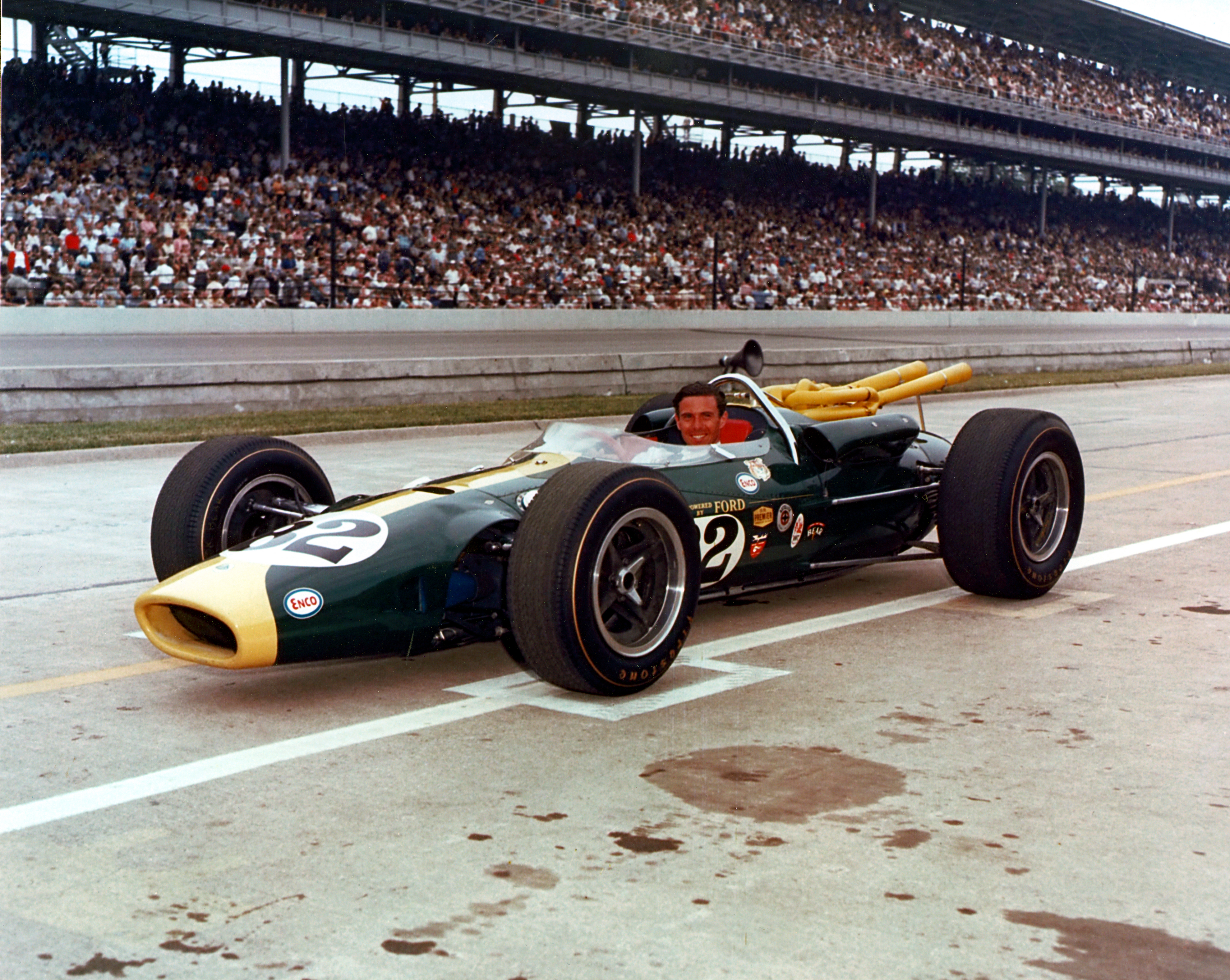
In 1961 a tiny little British car turned up with an Australian driver. But it wasn’t its size that surprised the Americans – it was the location of its Climax engine.
Of course, it was the Cooper T54 driven by three-time Formula 1 world champion Jack Brabham (below). Ultimately the car was well beaten on the straights by the muscular four-litre plus front-engined ‘roadsters’ but had strategy played out the minnow nicknamed ‘funny car’ would have been in the fight for victory – such was its cornering prowess with its mid-engine layout.
Despite its ninth-place finish, the Cooper got many thinking about the future and where the engine should be placed, much like in F1. By the time 1965 came around, the first car with a mid-engined layout would win at the Brickyard.
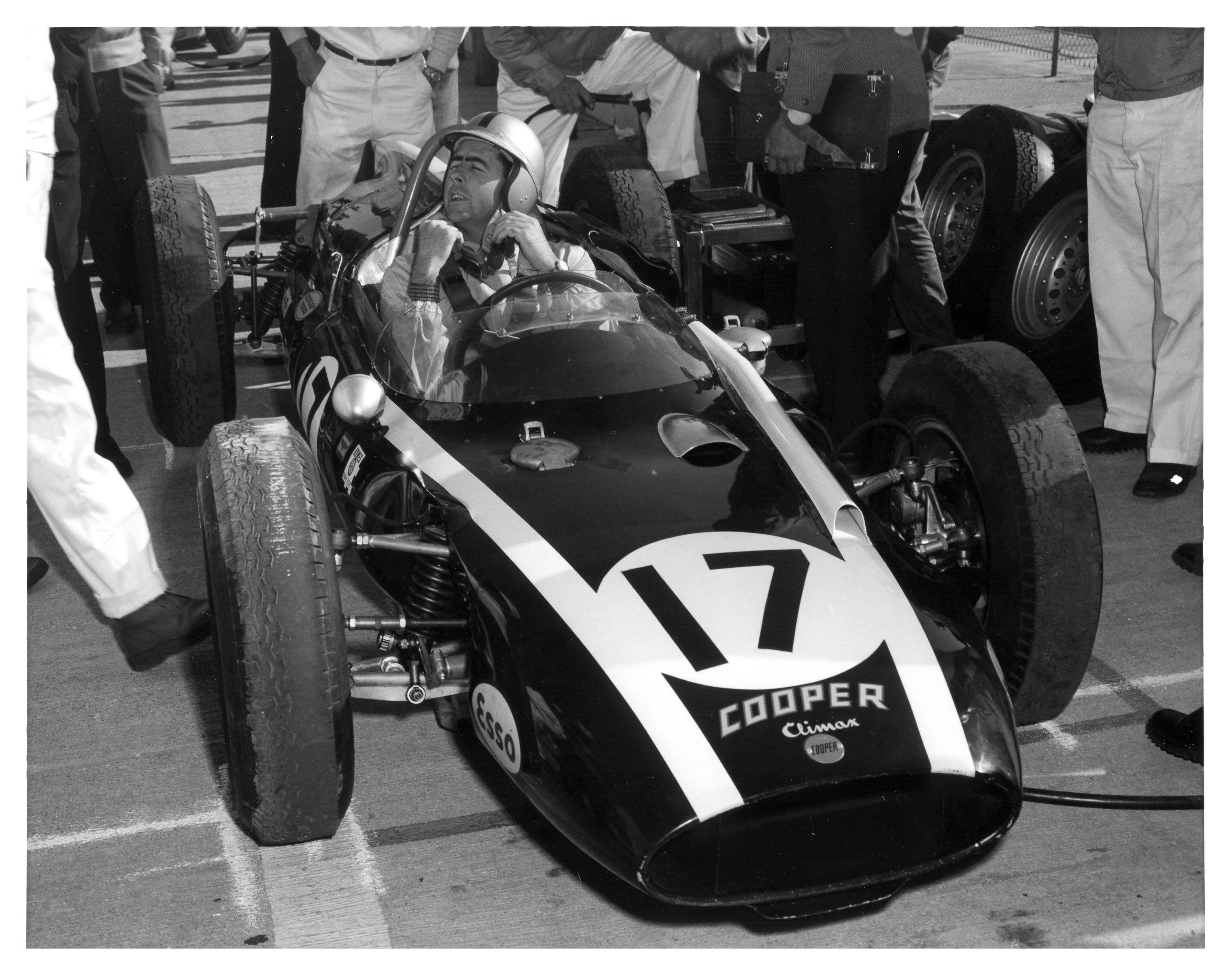
And it wasn’t just any winner, it was Jim Clark and Lotus, the dominant driver and pioneering marque that would define an era.
By 1965 only four front-engined cars remained and even American stalwart AJ Foyt had switched. He provided Clark’s biggest challenge but bowed out after half-distance. Colin Chapman’s employing of the Wood brothers – NASCAR pitstop pioneers – had fixed the chaotic operation of the previous two years and the slick performance signalled in a new era of IndyCar racing in style.
It was only the second time a green car had won at Indy and the first time since 1947 an Offenhauser-powered car hadn’t. Speaking of a changing of the guard, the rookie of the year was Mario Andretti. Enough said.
1992 – The tale of two finishes, race and career
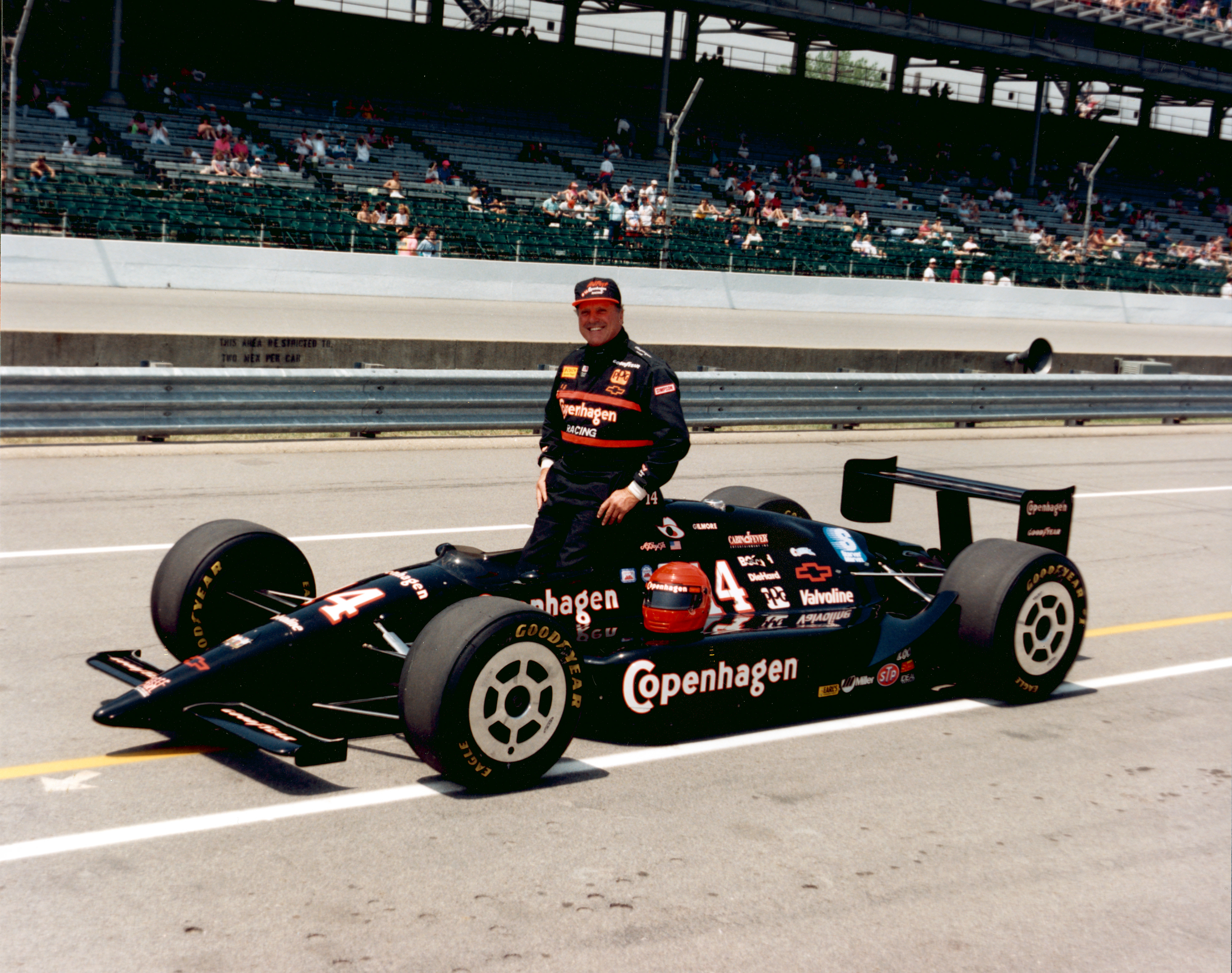
It’s hard to believe in an era where age records continue to fall that a 57-year-old could start the Indy 500! However, not all drivers are AJ Foyt.
Having started his first 500 in 1958, Foyt won in 1961, ’64, ’67 and ’77. The Le Mans 24 Hours and Daytona 500 winner did not miss a 500 after his first until 1993 – 35 starts – when he removed his entry following a crash for his team’s driver Robby Gordon on Pole Day.
That made his start at 57 and 128 days in 1992 a record, and he delivered a ninth-place finish for his troubles.
The crowd – not knowing this would be Foyt’s last event before retirement – were treated to one of the best on-track races in the event’s history.
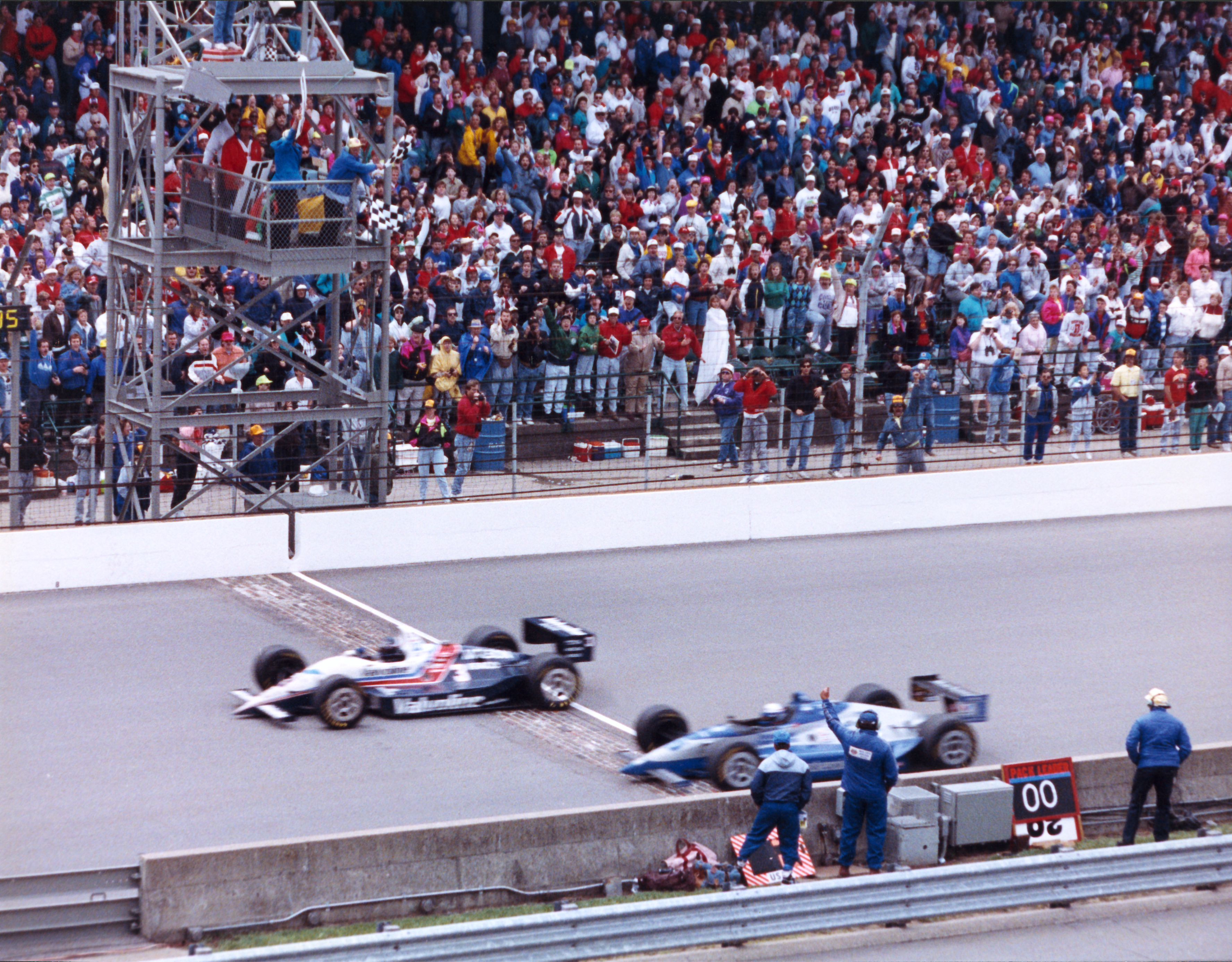
In all, 10 past winners made the start, and a double overtake at Turn 1 on Eddie Cheever by father and son duo Mario and Michael Andretti right at the beginning of the race signalled what was to come. Cool temperatures meant cold tyres, and 13 caution periods thanks to various accidents.
Michael dominated, but inside the last 50 laps the Andretti curse struck and he broke a fuel pump, causing a caution. With 10 laps to go, Al Unser Jr led the field with 33rd-place starter Goodyear behind after a phenomenal drive through the field.
On the final lap after much haranguing, Goodyear got a brilliant run off Turn 2 and closed in. Coming off Turn 4, Goodyear went right and then left, stalking Unser, but in the end Unser outdragged him to win by the smallest margin in Indy 500 history – 0.043s!
Even in today’s spec-chassis series, it would be very impressive if a 500 was that close at the line – and it’s even more unlikely that a 57-year-old driver would feature.
2020 – Virtually the best 500s ever
They weren’t 500-mile races (unlike iRacing’s own annual version), but in the lockdown esports racing boom three major events were held using the Speedway to help fill the gap while awaiting the real-world event.
And the outcomes were certainly weird.
IndyCar’s own iRacing Challenge season finale at the Speedway became notorious after Simon Pagenaud’s deliberate removal of Lando Norris, and then featured two separate collisions between lead contenders on the final lap before Scott McLaughlin won.
Fernando Alonso was the hero when The Race All-Star Series Powered by ROKiT Phones’ Legends Trophy first came to Indy – winning from both the front of the grid and the back.
But his sparring partner Jenson Button got his revenge when the series returned in the Triple Crown season, on a night when David Brabham got an Indy win too and the Pro Cup and Sim Masters tried ovals too.
1936 – Tradition, tradition, tradition
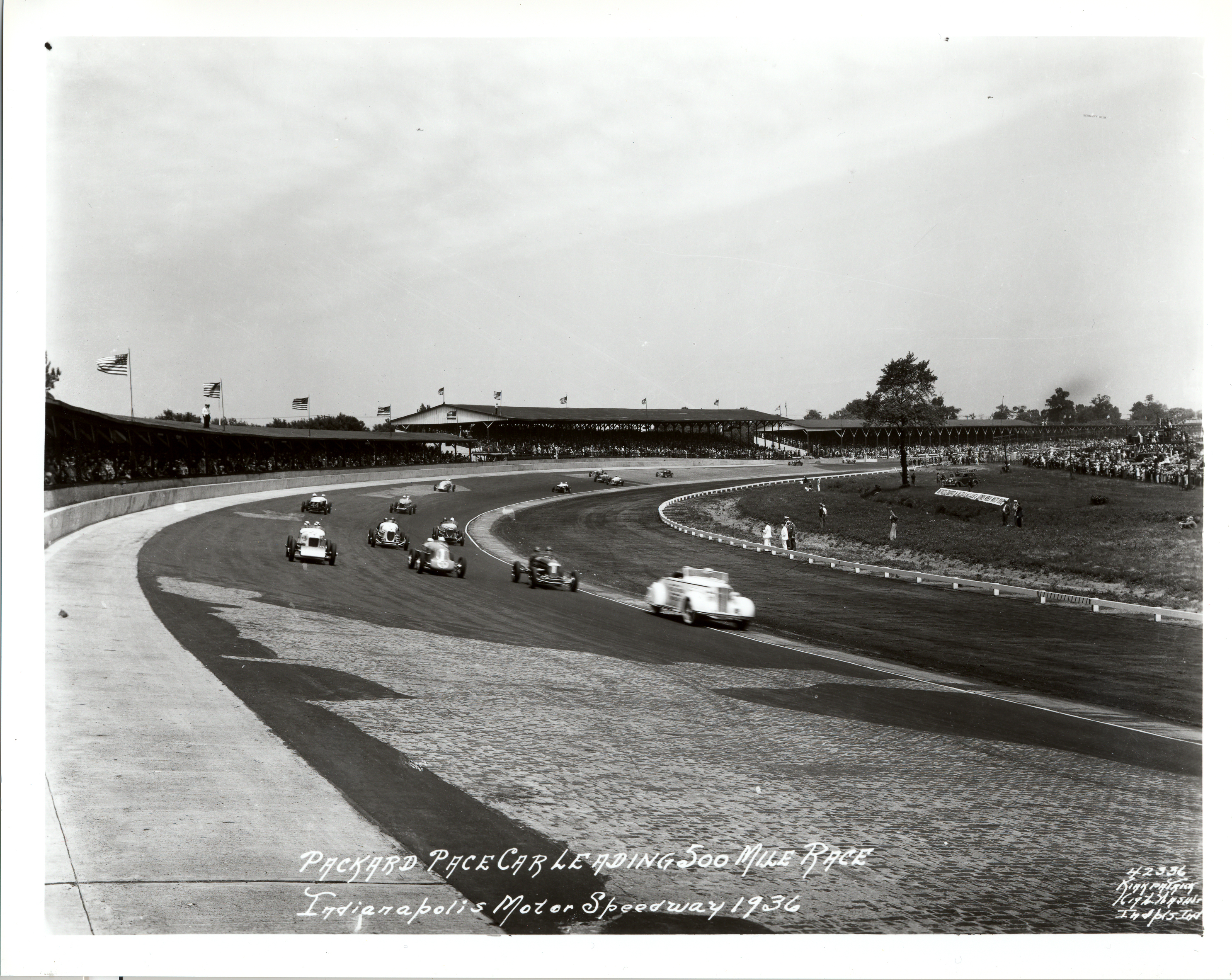
Where to start on this bonkers year at Indy! It is perhaps one of, if not the most, important events in the 109-year history.
Anyone who has made the pilgrimage to Indy for the 500 knows it is an event made special for many reasons, but among the most important are the quirks and traditions that have been enshrined in folklore.
The racing itself this year was not supreme. A number of retirements rewarded the conservative efforts of Louis Meyer, who – in experimenting with volatile fuels as many competitors did in response to the maximum juice allowed being reduced – lost three engine blocks in practice and only made the race when a new engine was flown in.
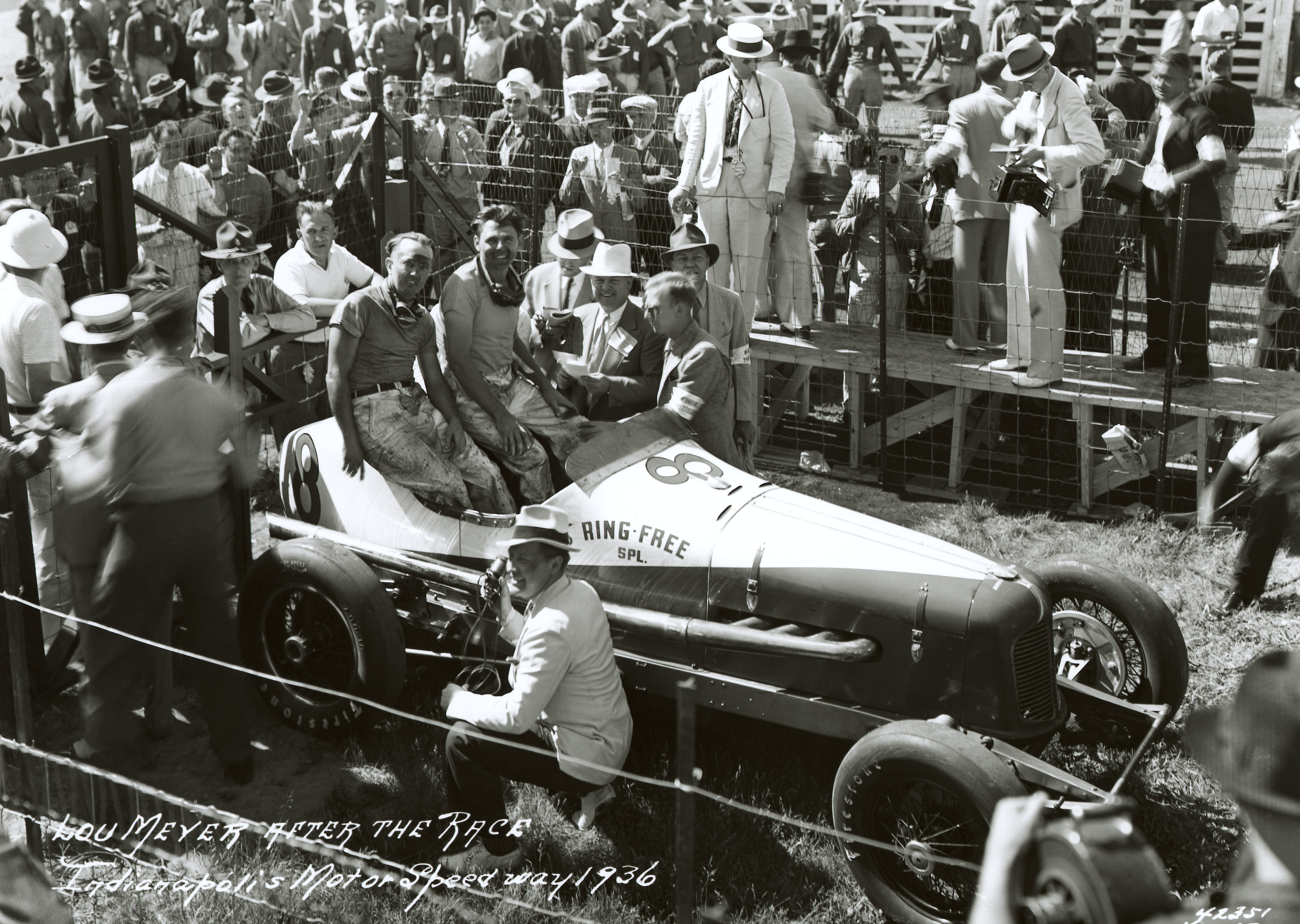
His consistency was rewarded with the title of becoming the first person to win three 500-mile races at Indy. While growing up, Meyer’s mother urged him to drink milk on hot days as it would give him energy, and when a mechanic handed him a bottle in victory lane, he drank it and the picture made the newspapers. The Milk Foundation took notice and ensured that the winner drinking milk would become a tradition in the future.
As a reminder of how important the traditions of the 500 are, Emerson Fittipaldi tried to drink orange juice after winning the 1993 event owing to his ownership of orange farms back in Brazil, but he was swiftly urged by all involved to take a swig of milk under pressure. He obliged…
Coincidently, another two-time winner Tommy Milton was invited to drive the pace car in 1936, and he agreed on the proviso that the winner takes the car home! That’s also been a tradition ever since.
Finally, it was the first year the famous Borg-Warner Trophy was awarded. The trophy now famous for its wings and having the faces of previous winners enshrined on its base has been awarded ever since.
1986 – The six-day 500
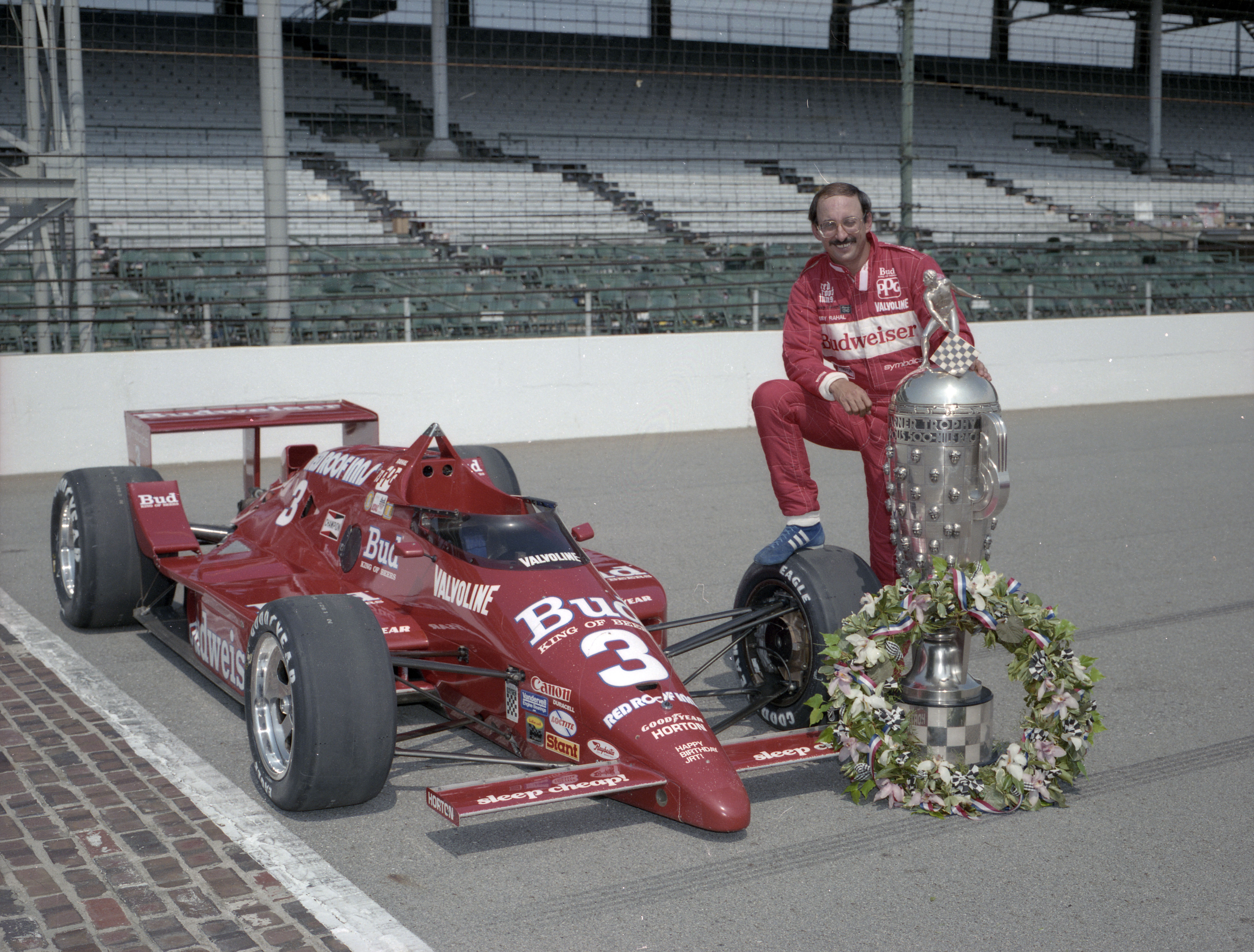
There were plenty of 500s that could have made this list from the 80s, including the 1985 ‘spin and win’ where Danny Sullivan managed to avoid ploughing into the wall and recovered to take victory. But if we’re going for weird, 1986 has to make the list as the longest 500 ever!
It was due for May 25, but rain hit and delayed it for two days, before finally – on Monday – the race was moved to the following weekend and took place on May 31. Hardly a 2020-style three-month delay and it didn’t even move out of May, but still, a first of sorts with its six-day duration.
Once racing did resume, there was plenty of action with 19 lead changes among seven drivers. Bobby Rahal went on to win for the Truesports team, which delivered a number of storylines. The team had been founded in the early 1980s by hotel chain owner Jim Truman. Just 11 days after winning the 500, Truman passed away of cancer at just 51, but he had been able to attend the race and see his dream of winning come true.
The squad was, at the time, expecting to become Ferrari’s works team for its new IndyCar programme, but instead, the Ferrari 637 would be mothballed before it ever competed. It was still a successful time for the team with many great memories including the ’86 and ’87 IndyCar titles.
1930 – The 99% dominance
“Dominance” is a word rarely used at Indy when you think about it. It’s such a tough race to win and, unless the word is flouted around unfairly, people rarely dominate in the true sense.
However, there’s no denying it can be used to describe the race in 1930, when the 500 had its equal fewest lead changes (with 1965) and the winner led 99% of the race! Billy Arnold went on to win by an incredible seven minutes.
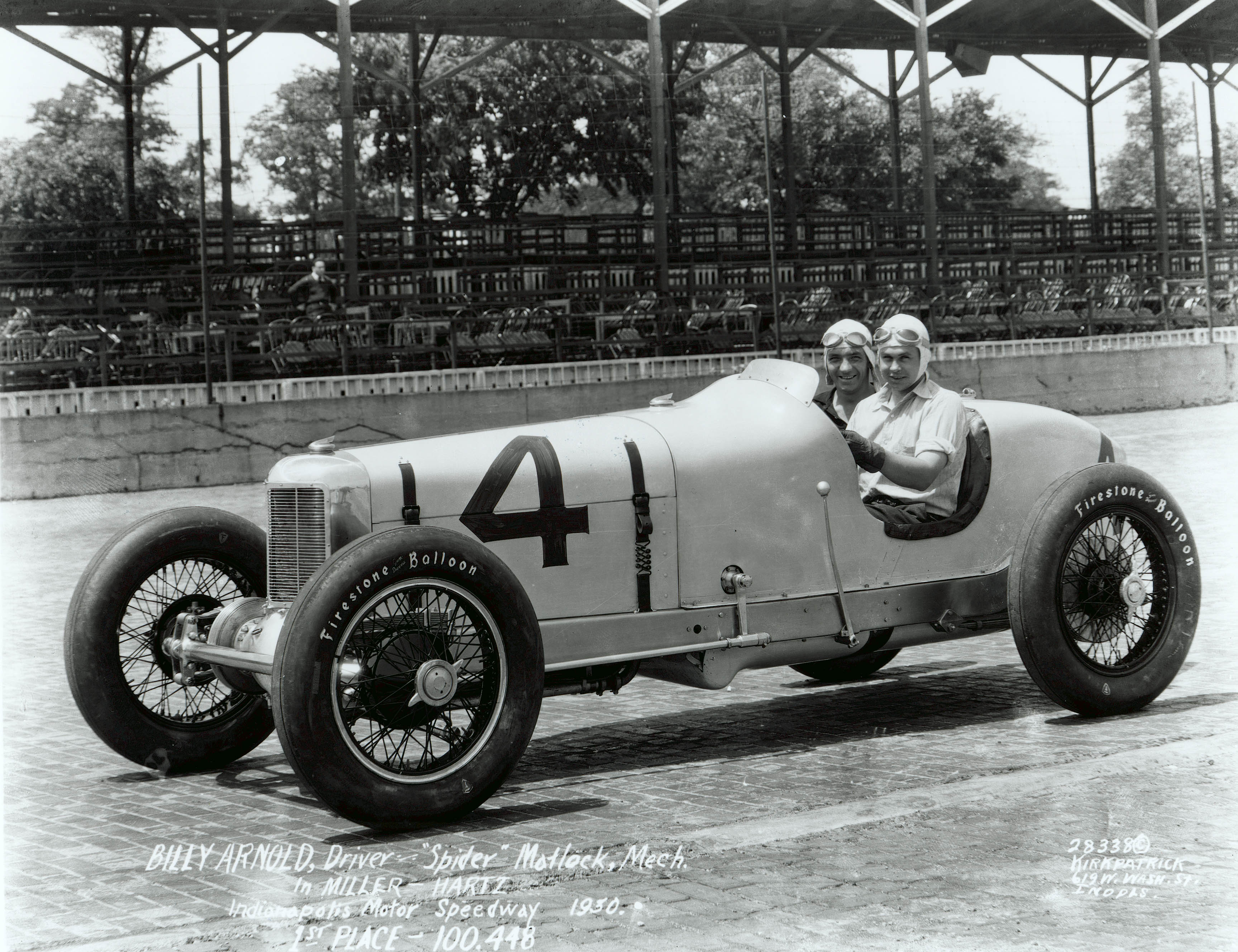
New rules introduced for 1930 allowed more stock-based cars to become competitive, as the Great Depression tightened the purse-strings across the nation. Despite the economic climate, the combination of the new rules and lifting the grid maximum from 33 yielded 38 machines at the start.
Within that pack, a car which housed a man’s life savings; Harry Hartz was looking to rebound from injuries suffered earlier in his career, and signed the seatless Arnold as his relief driver. However, it soon became clear Hartz was not up to the task of caressing the Miller over 500 miles.
Arnold took over and the rest is history. One of the youngest-ever winners at 24, he never repeated the feat although his incredible dominance will never be forgotten, or likely repeated.
2011 – A whole month for less than a mile
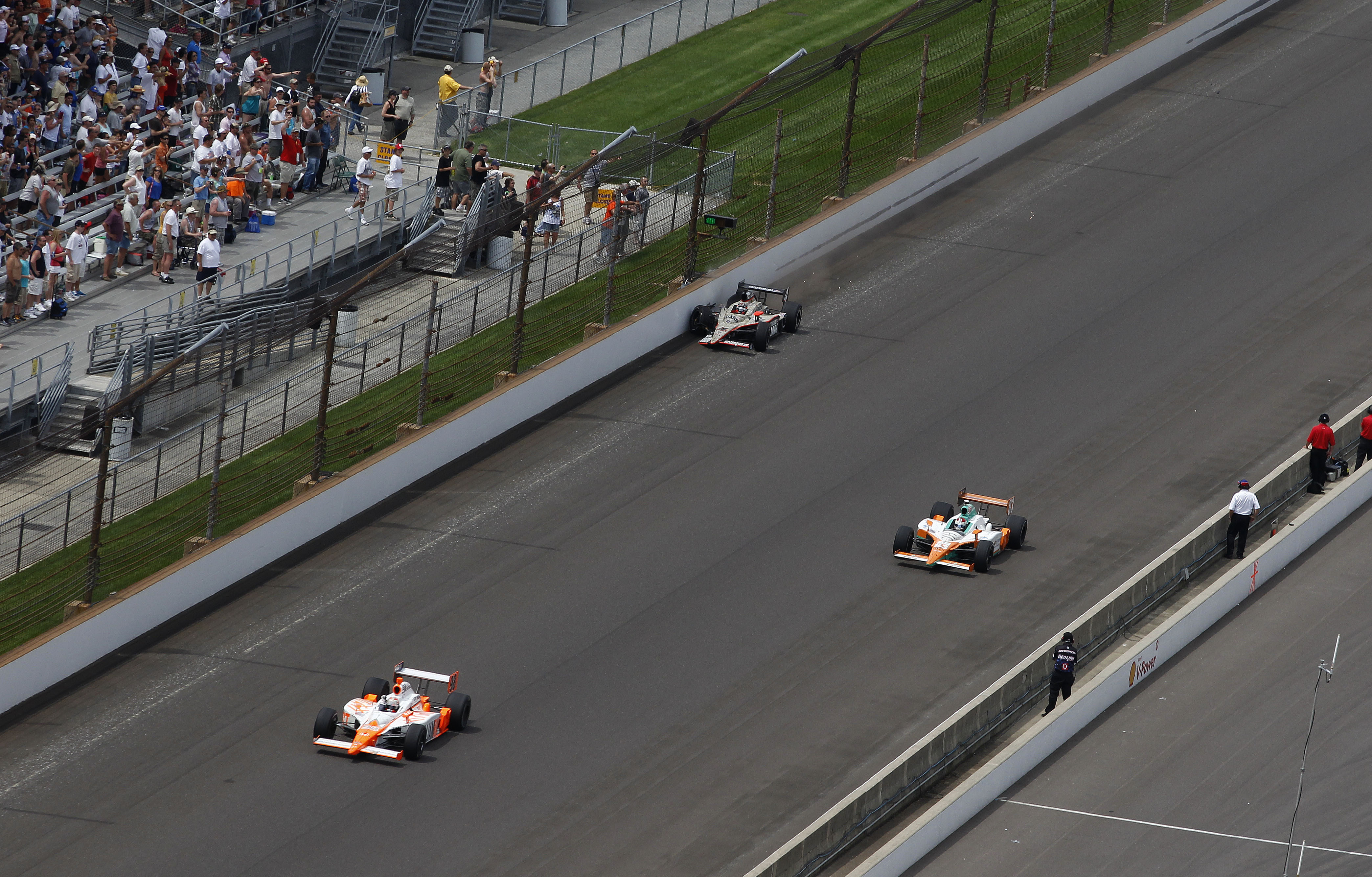
Let’s just be clear, you could write a book on the 2011 Indy 500 and we’re not going to be able to do it justice in this small segment.
Rain affected the build-up, while the race was all about strategy. In the end, it came down to the last lap as rookie JR Hildebrand looked set to take an incredible win.
But trying to lap Charlie Kimball at Turn 4 he moved too high up the racetrack and skated into the wall.
His mangled car still crossed the line, but he was beaten to the bricks by Dan Wheldon.
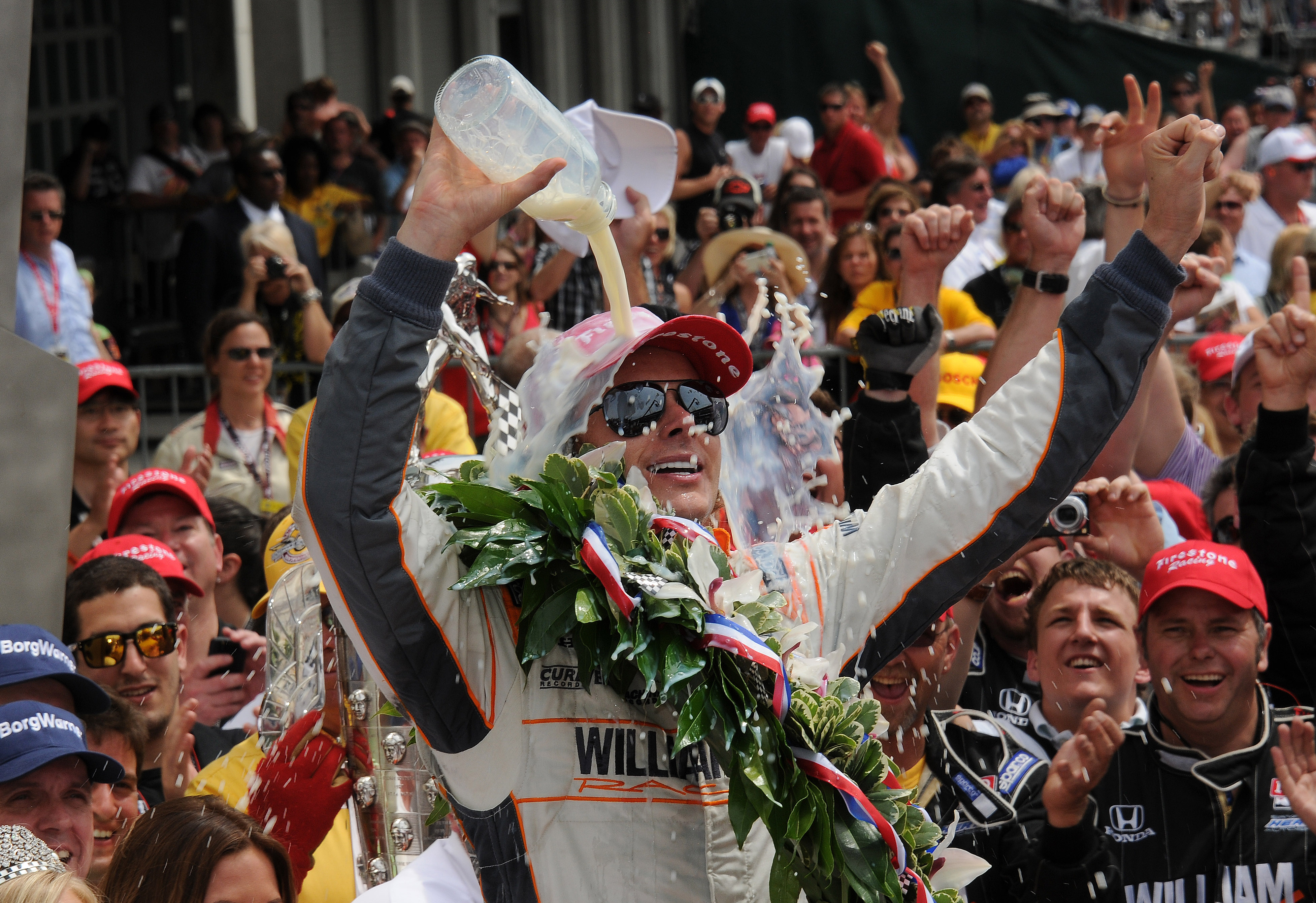
It was the Brit’s second win, and he holds the honour for the fewest amount of laps led in a 500. In fact, he led 0.5% of the race and probably less than a mile.
Despite the sympathy for Hildebrand, it was a popular win for one of the most successful drivers of his era at the 500. Sadly, Wheldon would be fatally injured in a crash later that year at Las Vegas, and the car that was introduced for 2012 featuring improved safety was named after him following the work he had put into helping its development. He remains one of a kind and sorely missed.
With thanks to the Indianapolis Motor Speedway archive for images

